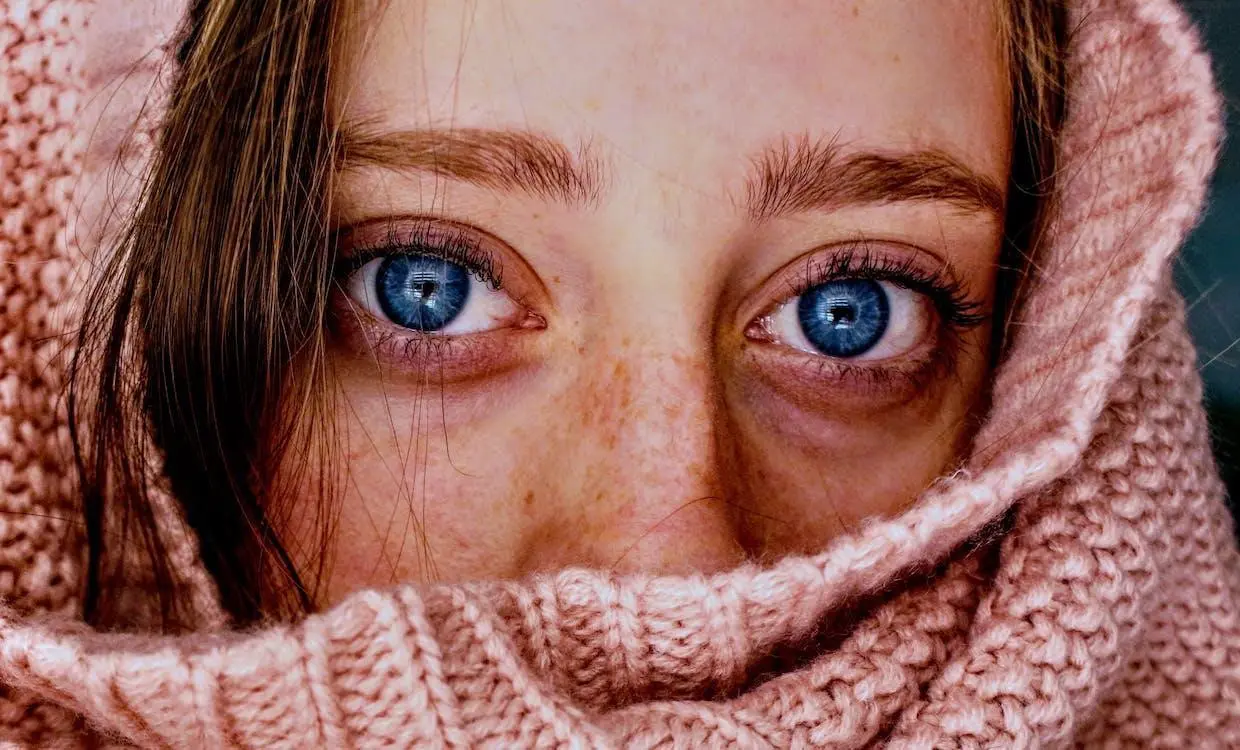
Rosacea skin problems can be problematic due to their sensitivity and visibility. If not treated in time, they can worsen and lead to added issues. Rosacea is one such chronic skin disease that can affect the central face. The disease can develop in multiple ways and at different ages. What is rosacea? What are the common symptoms? How is it caused? We have covered everything about rosacea if you are looking for the answers to these questions.
What Is Rosacea?
Rosacea is a chronic skin problem that causes flare-ups on the central face, leading to severe redness and bumps. The disease typically starts after thirty years, with flushing and redness signs around the cheeks, nose, forehead, or chin. When left untreated, the redness becomes more intense and persistent. Moreover, blood vessels begin to appear on the surface.
Worsened cases of rosacea can lead to inflammatory skin bumps and pimples. Men are more likely to notice swollen nasal areas due to excess tissue. Studies suggest that nearly 50% of patients notice redness in their eyes, causing irritation. While rosacea can affect anyone with any skin type, the cases are more common among individuals with brighter skin (people who blush easily).
Major Diagnostic Signs of Rosacea
Rosacea can be diagnosed based on two major (conditional) signs or one diagnostic sign. We have covered each category below for a thorough understanding.
Diagnostic Signs
The common diagnostic signs of rosacea are mentioned below.
Persistent Redness on Skin
People with persistent redness in the central facial area are most likely to be diagnosed with rosacea. Additional signs include sunburn, blushy skin, and irregular skin surface.
Thickening of Skin
The thickening of skin due to tissue excess is a common diagnostic sign of rosacea. The thickness is typically noticeable on the nose.
Major Signs
Below, we have highlighted the major signs of rosacea.
Frequent Flushing
People with a history of frequent flushing or blushing are more likely to have rosacea. While valid, the condition may be accompanied by a sense of warmth.
Bumpy Texture and Pimples
People with bumpy skin texture and pimples are more likely to have rosacea. Small red bumps and pimples (pus-filled) often develop in people with rosacea.
Visible Blood Vessels
Many rosacea patients notice prominent (small) blood vessels (telangiectasia) on their cheeks, nose, and other parts of the central face.
Irritating Eyes
Rosacea patients may notice watery, irritated, and blood-spotted eyes (ocular rosacea). Although such signs may not be common in all patients, they are more likely to impact males in the worst cases.
Causes of Rosacea
The direct causes of rosacea are unknown. However, medical research indicates that facial redness is more likely to be caused by the inflammation of a combination of neurovascular dysregulation. The redness may also occur due to the innate immune system.
Additionally, research has shown that a massive increase in mast cells between the nervous and vascular systems is a common factor leading to rosacea.
Apart from these, a microscopic mite, Demodex folliculorum, has also been found to be a potential cause of rosacea in certain patients. It is worth noting that this mite is common among the skins of people but is found abundantly in the skins of rosacea patients.
How to Treat Rosacea? Common Treatment Options
When diagnosed with rosacea, patients can opt for one or more of the following treatment options for desired results. Please note that the choice of treatment varies for each patient and may be best advised by a dermatologist.
Topical Medications
Topical medications for rosacea treatment may work for patients with moderate symptoms. Applying creams, gels, or lotions (recommended by a doctor) can help in reducing inflammation. These medications contain anti-inflammatory compounds to control the worsening symptoms of the disease.
Oral Antibiotics
In severe cases, doctors prescribe oral antibiotics to patients to combat inflammation from the inside. These antibiotics act on harmful bacteria to stop their overgrowth. Sometimes, oral medications and topicals work together to produce more effective results. However, you may consult your doctor to determine the best treatment for your condition.
Gentle Skin Care
Since rosacea is more common in people with blushing and flushing faces, a gentle skincare routine can be effective to ensure long-term healthy skin. Using non-irritating skin care products (without harsh chemicals and alcohol toners) can be effective in minimizing the disease’s symptoms.
Sun Protection
Exposure to sunlight can trigger irritation in rosacea patients. To avoid such triggers, doctors advise patients to use high-SPF sunscreens. More so, using skin-friendly clothing to cover the face in intense sunlight can help in minimizing irritation.
Laser Therapy
Laser therapies can be effective in treating rosacea, depending on the patient’s condition. Dermatologists thoroughly monitor the skin and prescribe the optimal laser treatment for effective results. Laser-targeting visible blood vessels and red areas can help prevent flare-ups.
Intense Pulsed Light (IPL)
In some cases, using intense pulse light (IPL) to target exposed blood vessels and spots reduces redness without impacting the skin. It is a sensitive treatment and may only be performed by experts.
Dermabrasion or Microdermabrasion
Dermabrasion or microdermabrasion refers to gently removing the top layer of the rosacea-impacted skin to reduce bumps. This procedure is an effective method to improve the facial texture and reduce redness.
Prescription Medications
In more complicated rosacea cases, dermatologists prescribe patients with specific medicines for targeted treatment. These medications may treat redness, bumpy texture, inflammation, and irritation to reduce overall discomfort.
Trigger Prevention
Rosacea patients can notice flare-ups in certain environments. Avoiding such triggers can ease irritation and minimize discomfort. While true, patients must consult dermatologists to determine the best treatment options to support healing.
Treat Rosacea with Suncoast Skin Solutions
Rosacea is an irritating skin disease that requires special attention and care for treatment. Only experienced and professional dermatologists know how to handle the disease through different stages. Suncoast Skin Solutions is a reputable dermatology practice offering a wide range of advanced skin treatment solutions to patients.
Our experienced dermatologists can diagnose the disease in its earliest stages to ensure thorough treatment. If you are dealing with rosacea, contact us today to schedule your appointment for timely treatment.
SunCoast Skin Solutions Dermatology offices are located in Tampa / Hillsborough, St. Pete / Pinellas County, Brandon, Lutz, Winter Haven, Largo, Hudson, Leesburg, Jupiter, Lecanto, Riverview, Brooksville, Clearwater, Ocala, Palm Harbor, Daytona Beach, Sarasota, Punta Gorda, Seminole, (Inverness, Port Charlette, Port Saint Lucie coming soon), Florida. Contact us at 1-844-786-3376 or click here.

Recent Comments